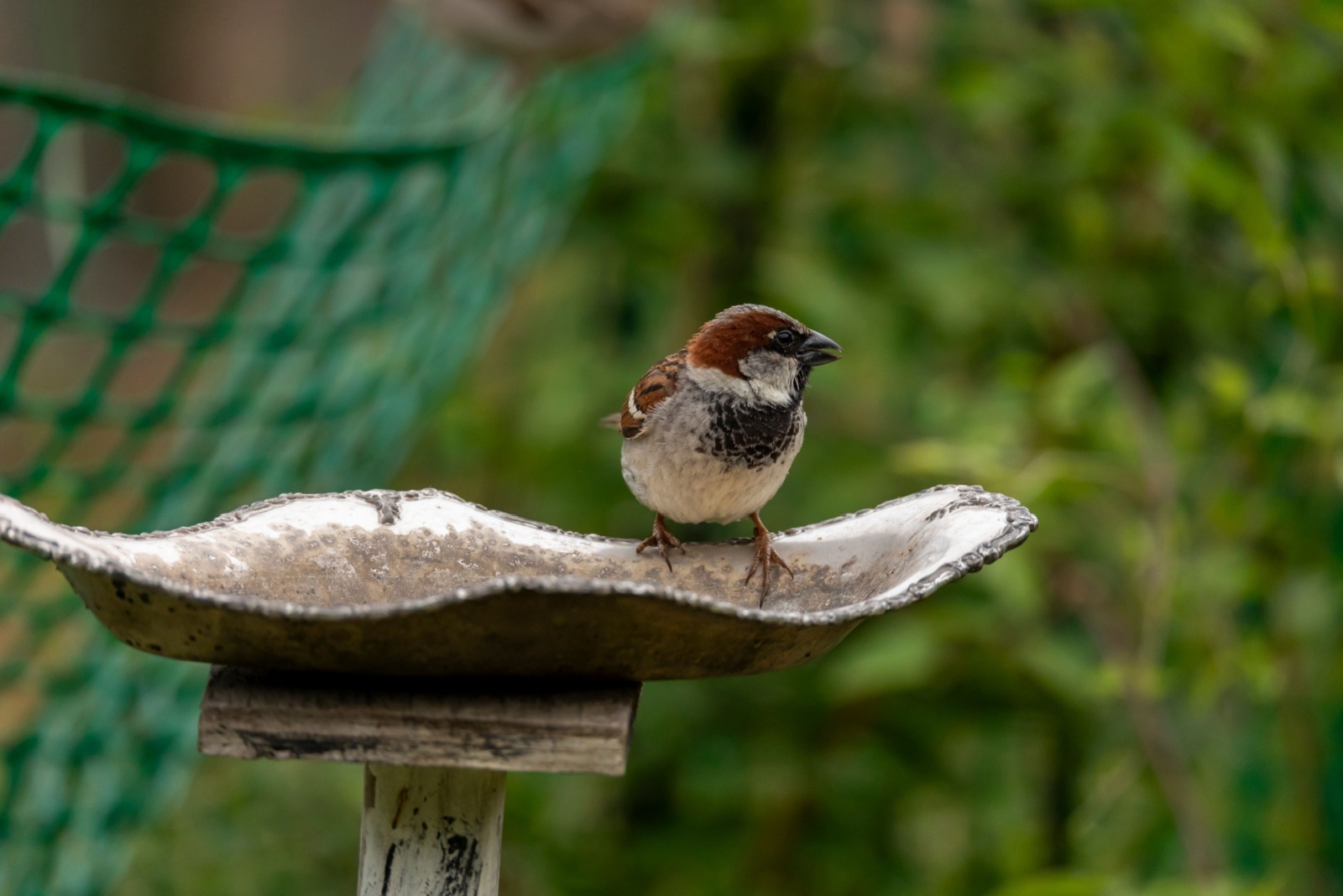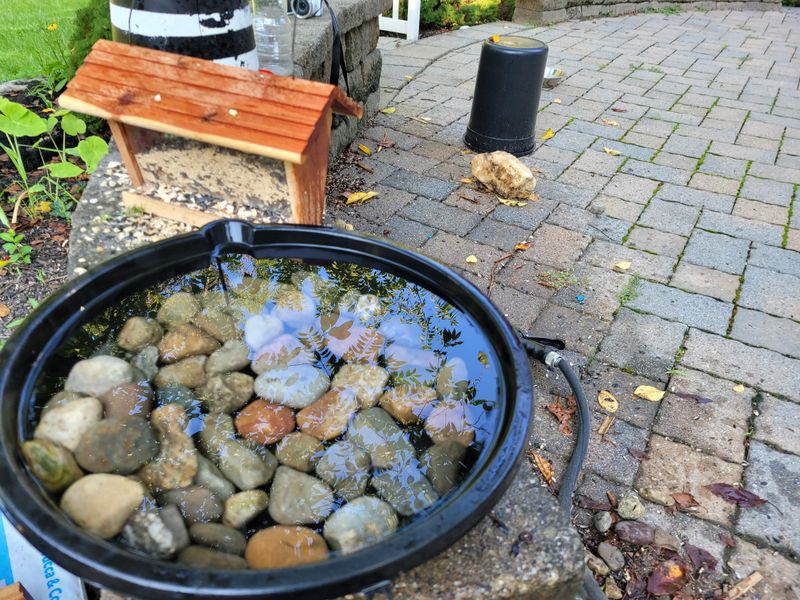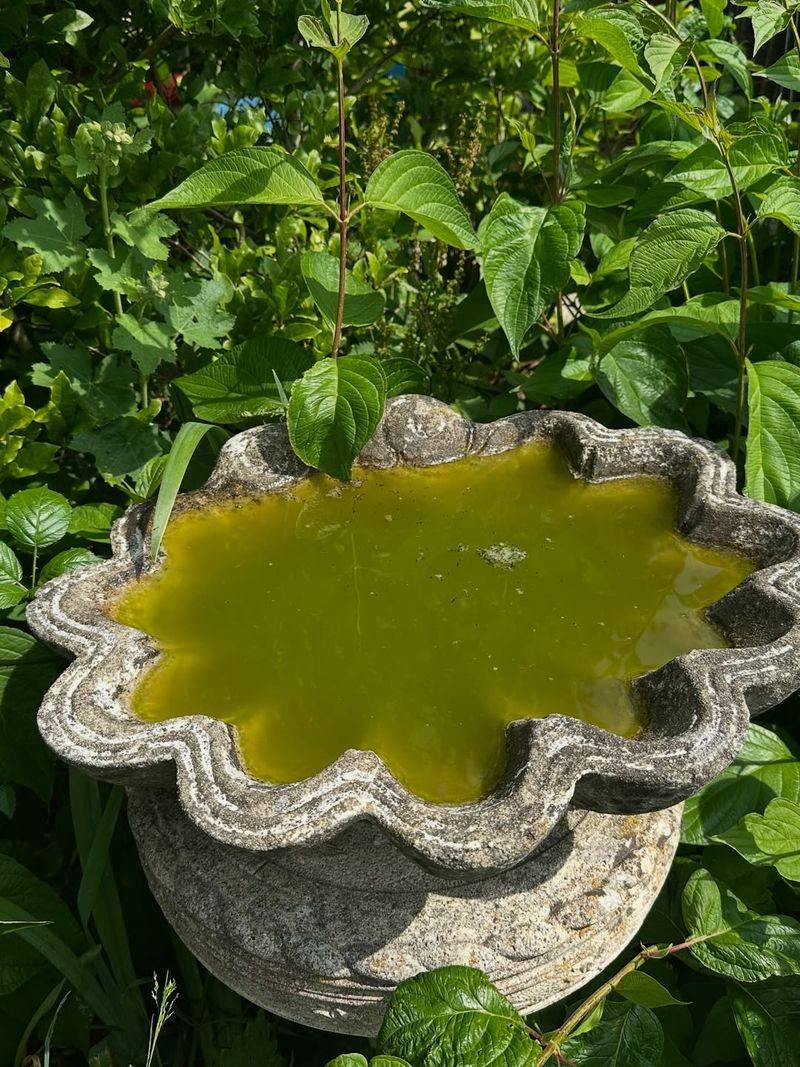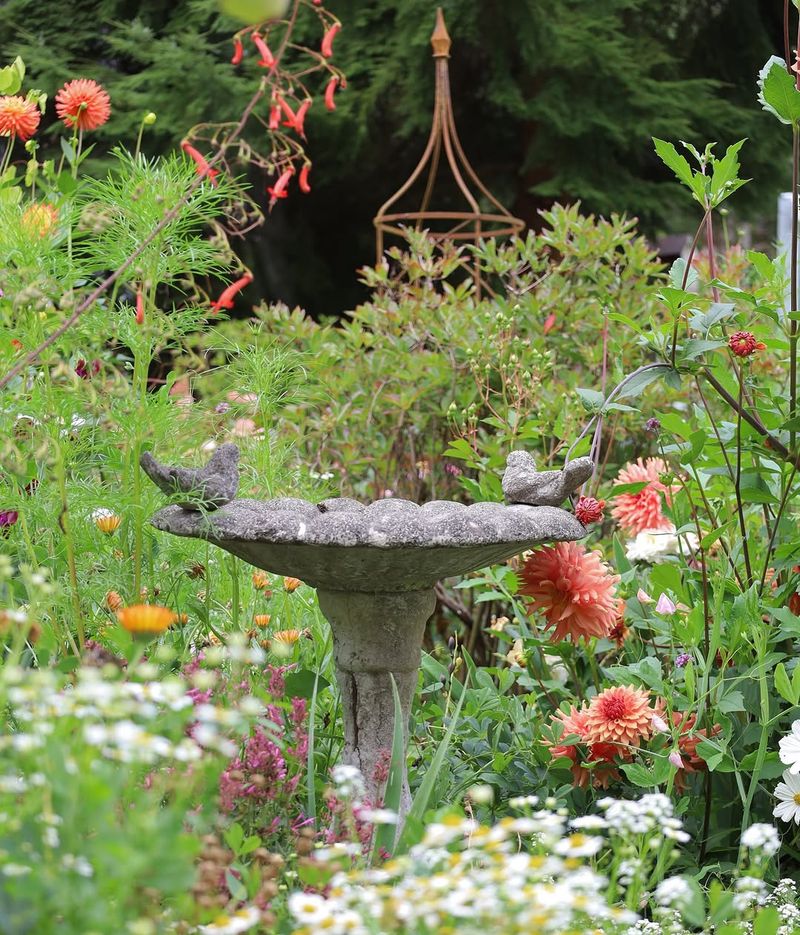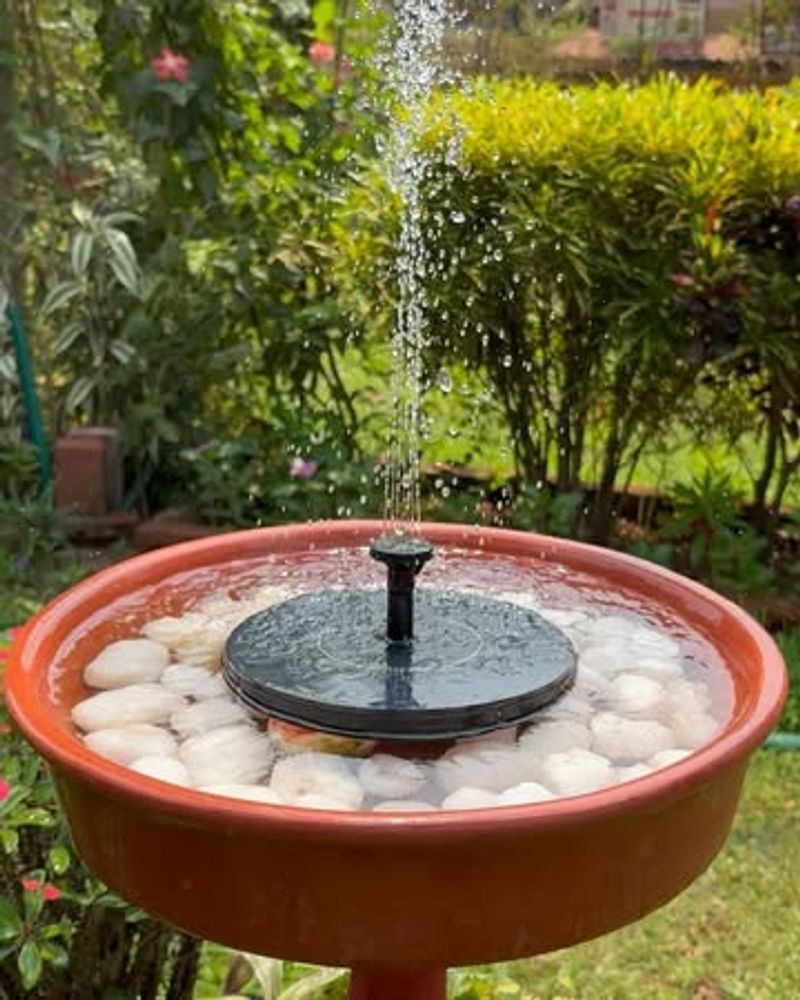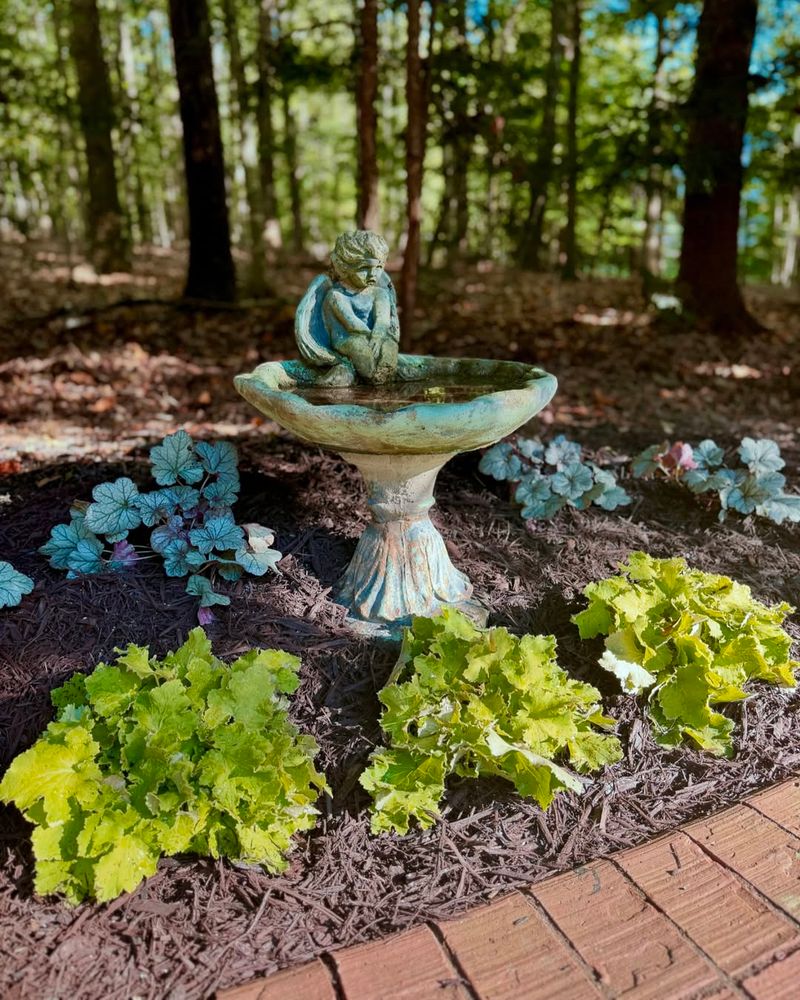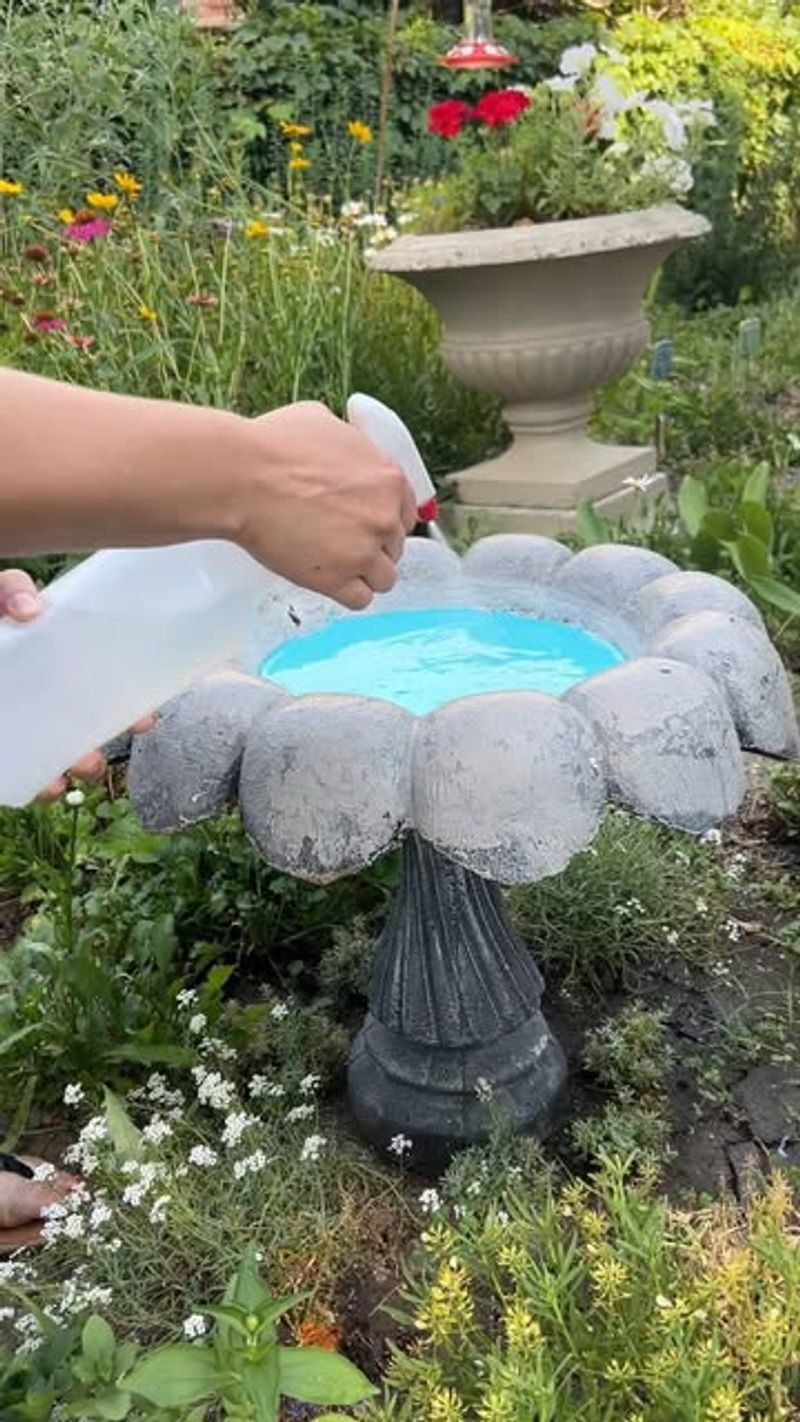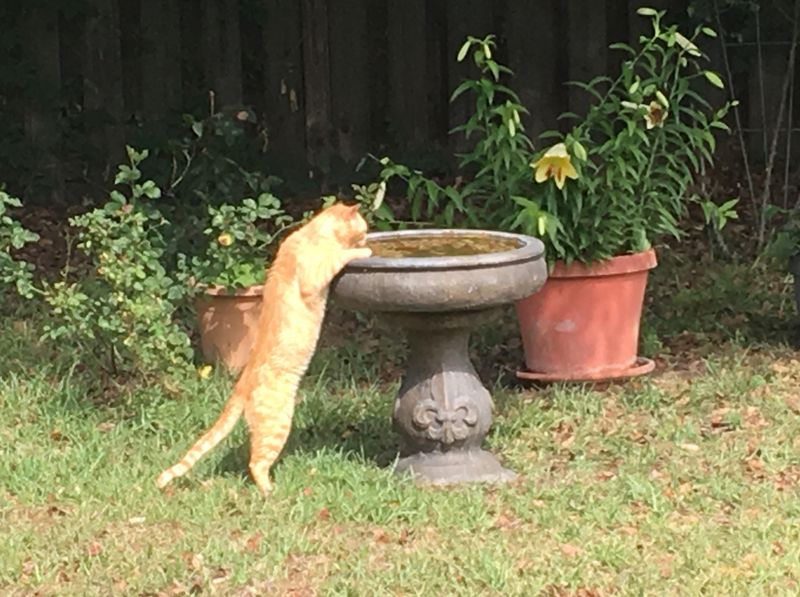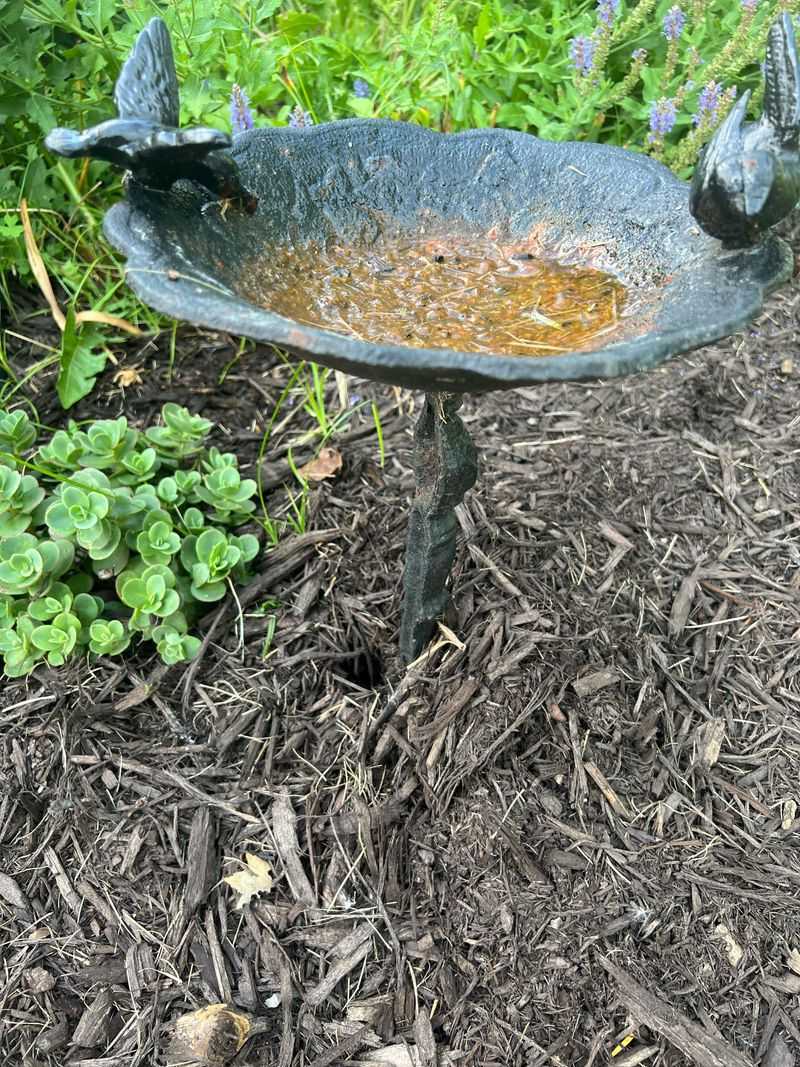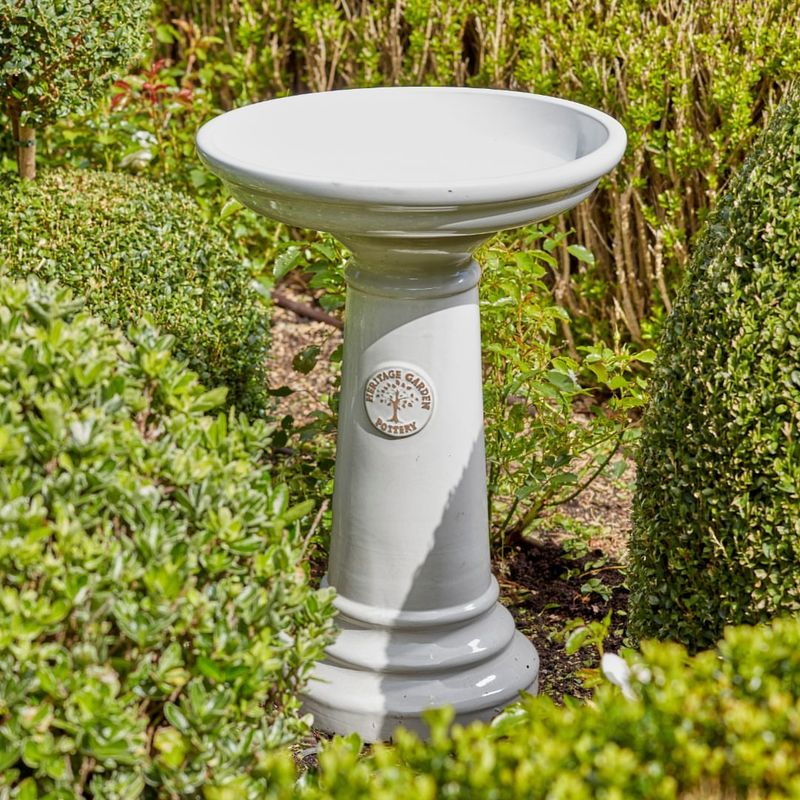Setting up a birdbath in your Florida yard seems simple, but many backyard enthusiasts unknowingly make mistakes that send birds flying elsewhere. Our feathered friends have specific needs when it comes to bathing spots, especially in Florida’s unique climate.
Understanding these common birdbath blunders can transform your yard into a bird paradise that keeps colorful visitors returning day after day.
1. Water Too Deep for Comfort
Most birds prefer shallow puddles, not swimming pools! Many Florida birdbath owners fill their baths too deeply, creating a drowning hazard for smaller species like warblers and finches.
The ideal depth ranges from just ¼ inch at the edges to no more than 2 inches at the center. Adding a few flat rocks creates perfect shallow spots where tiny birds can safely splash without stress.
2. Slippery Surfaces Causing Falls
Glossy ceramic or glass birdbaths might look elegant in your garden, but they’re treacherous for bird feet! Smooth surfaces become even more dangerous when wet, causing birds to slip and potentially injure themselves.
Birds need texture to grip safely. Look for concrete baths with rough-textured bottoms or add small pebbles to create traction. A single bad experience might convince birds your bath isn’t worth revisiting.
3. Neglecting Regular Cleaning
Florida’s warm climate accelerates algae growth and bacteria buildup in standing water. That greenish film isn’t just unsightly – it’s potentially harmful to birds!
Many bird lovers forget that birdbaths need scrubbing every 2-3 days. Use a stiff brush and replace water frequently, especially during summer months. Birds instinctively avoid contaminated water sources, so a dirty bath will quickly become a lonely one.
4. Placing Baths in Dangerous Locations
Location matters tremendously! Birdbaths placed in open areas make birds feel vulnerable to neighborhood cats and hawks. Without nearby escape routes, birds won’t risk bathing.
Position your bath about 10-15 feet from dense shrubs or trees. This sweet spot gives birds quick cover if threatened, yet maintains enough open space for them to spot approaching predators. Smart placement dramatically increases bird traffic to your bath.
5. Forgetting Moving Water Features
Still water rarely catches a bird’s attention from above. Birds are naturally drawn to the sparkle and sound of moving water – it signals freshness and safety.
Florida yards without water movement miss countless bird visitors! Simple solutions include inexpensive solar fountains, drip systems, or water wigglers. The gentle rippling not only attracts more species but also helps prevent mosquito breeding in Florida’s humid climate.
6. Ignoring Florida’s Intense Heat
Florida sunshine quickly turns birdbaths into hot tubs! Water temperatures above 104°F can stress birds or cause them to avoid your bath entirely.
Many bath owners forget that birds seek cooling relief, not a sauna. Position baths where they receive morning sun but afternoon shade. Consider adding ice cubes during heatwaves or installing misters nearby to create cooling microclimates that birds will flock to.
7. Using Harmful Cleaning Products
Harsh chemicals linger even after rinsing! Well-meaning bird enthusiasts often use bleach or commercial cleaners that leave residues toxic to birds’ sensitive respiratory systems.
Stick with white vinegar and elbow grease for cleaning. A solution of one part vinegar to nine parts water effectively disinfects without harm. After scrubbing, rinse thoroughly multiple times. Birds can detect chemical traces humans miss, and they’ll avoid contaminated water sources.
8. Overlooking Predator Protection
Florida’s diverse wildlife includes many bird predators. Cats, snakes, and raccoons quickly learn that birdbaths concentrate potential meals in one convenient location!
Elevated baths on pedestals create safer bathing spots than ground-level options. Adding a protective baffle below the bath prevents climbing predators from reaching bathing birds. Motion-activated sprinklers can also deter persistent hunters while keeping your feathered visitors safe.
9. Forgetting Year-Round Maintenance
Unlike northern states, Florida’s mild winters mean birds need bathing options all year long. Many residents mistakenly pack away bath supplies during winter months.
Florida’s winter migrants especially appreciate water sources! Maintain your bath through all seasons, watching for cracks from thermal expansion or leaks at seams. Fresh water remains crucial even in cooler months, as Florida birds continue their bathing routines regardless of the calendar.
10. Missing Perching Opportunities
Birds prefer to scope out bathing spots before diving in! A common mistake is installing smooth-edged baths without nearby perches.
Enhance your bath with branches positioned just above water level where birds can land, evaluate safety, and preen after bathing. These landing zones are especially important for larger Florida species like jays and cardinals. Adding natural perches transforms a rarely-used bath into a popular bird hangout.

